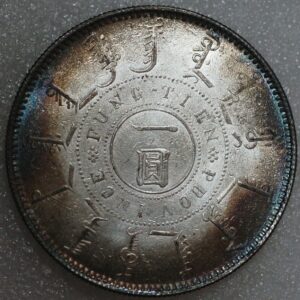Sale!
Spain Cobs coin 4 Reales 1626-1628 MD V mint Madrid Silver no2824
$990 Original price was: $990.$890Current price is: $890.
Description
Spain Cobs coin 4 Reales 1626-1628 MD V mint Madrid Silver no2824
Weight: 13.65 grams
Diameter: 30.1 mm
As additional silver deposits were discovered in the colonial territories there was a pressing demand to export it to Spain as quickly as possible. To do this, starting in the reign of Philip II, the mints produced irregular coinage called cobs. Rather than rolling out a bar of silver into a sheet of a specific thickness that could then be cut into smooth round planchets which would be stamped into coins, a faster method was employed. A bar of silver was simply cut into chunks of the appropriate weight. These small sliver clumps were then treated as if they were finished planchets and were hammer struck between crude dies. In fact, the Spanish word “cabo” (from which the English “cob” is derived) refers to the end; in this instance, the clump of silver clipped off the end of the bar. The size, shape and impression of these cobs was highly irregular but they were the proper weight. Many cobs were quite thick and disfigured with large cracks. Also, these uneven clumps made poor planchets so that frequently only a small portion of the image on the die was impressed on the silver. If a cob was overweight the minter simply clipped a piece off, further disfiguring the coin. During the seventeenth century a few full sized finished coins called “royal or presentation strikes” by present day collectors were also produced but it was only the crude cob that was mass produced.
The intention in minting these crude but accurately weighed cobs was to produce an easily portable product that could be sent to Spain. In Spain the cobs would be melted down to produce silver jewelry, coins, bars and other items. Cobs also circulated as coinage, many cobs made their way to the English colonies where they were used both as coins in commerce and hoarded as specie. As the cobs were crudely produced it was quite easy for colonials to clip off some silver and then pass the coin off at full value. Also, because of their crude design it was easy to make lightweight counterfeit cobs using the clipped silver. Many clipped and lightweight Spanish cobs were melted down in Boston to make the Massachusetts silver coinage.
Cobs were produced in denominations of one, two, four and eight reales under Philip II (1556-1598) and Philip III (1598-1621). A half real cob was added under Philip IV (1621-1665). Cobs continued to be produced through the reigns of Charles II (1665-1700), Philip V (1700-1724 and 1725-1746), Louis I (1725), Ferdinand VI (1746-1759) and Charles III (1759-1788). The obverse of a cob displays the crowned Hapsburg shield with the mintmark and assayer initial to the left and the denomination to the right of the shield. The legend, although frequently missing from the planchet, is some variation of the name of the king with DEI GRATIA (By the Grace of God). The reverse displays the arms of Castile and Leon within a quatrefoil design. The arms are similar to those on the Charles and Johanna pre cob silver coins but the two intersecting lines, dividing the shield into quadrants, are emphasized so that they represent a cross in the center of the shield with the castle and lion images in their respective corners. The legend is some form of REX HISPANIARUM ET INDIARUM (Of the Spains and the Indies – as found in the pre cobs). Starting in the seventeenth century most cobs were dated but this information was added to the obverse legend and was usually not picked up in the stamping of the coin.
Dating and locating a cob can be difficult. If an assayer’s initials are present and the mint is known then some dating parameters may be determined, as the dates of appointment are available for many assayers. Also, particular details on the obverse shield differ for each ruler so some examples without other clues can often be dated to a specific king, if the shield is distinct. If the mintmark is missing the reverse cross may assist in identifying the mint. A Jerusalem cross with a ball at each extremity denotes the Mexico mint. A variety of other specific details may assist in making attributions; consultation of regional studies may allow one to narrow the possibilities, especially if a coin can be assigned to a specific time period. For example, E.A. Sellschopp has identified the lion and castle punches used on the reverse cross shields of 8 reales from the Lima, La Plata and Potosi mints during the period 1568-1651.





